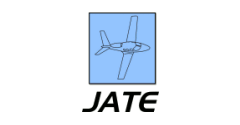Abstract
Many airports conduct simultaneous operations on intersecting runways to increase the rate of takeoffs and landings. This requires landing aircraft to hold short of the intersecting runway, which incurs a safety risk of runway incursions in the process. A Monte Carlo simulation was conducted to analyze the traffic load at maximum operational capacity at Charlotte-Douglas International Airport in order to analyze the fleet types and the rate of those landing aircraft unable to stop short of the intersecting runway. The researchers used the actual and four alternative compositions of the subject airline’s aircraft arrivals, interspersed among other airport traffic, to assess how such changes affect the rate of runway incursions, the rate of operations at the airport, and the mean number of passengers the subject airline can land per hour. The simulation revealed that runway length up to the hold short point was the biggest determinant of aircraft being unable to hold short. The total airport rate of operations decreased when heavy wake turbulence category aircraft were introduced. Despite heavy wake turbulence category aircraft carrying more passengers individually, the decreased operations rate also led to fewer passengers per hour that the subject airline could carry.
Recommended Citation
Ward, Kenneth A. and Owen-Perry, Heather
(2020)
"Modeling Land and Hold Short Operations: Balancing Safety and Arrival Rate,"
Journal of Aviation Technology and Engineering:
Vol. 9:
Iss.
2, Article 1.
Available at: https://doi.org/10.7771/2159-6670.1210



